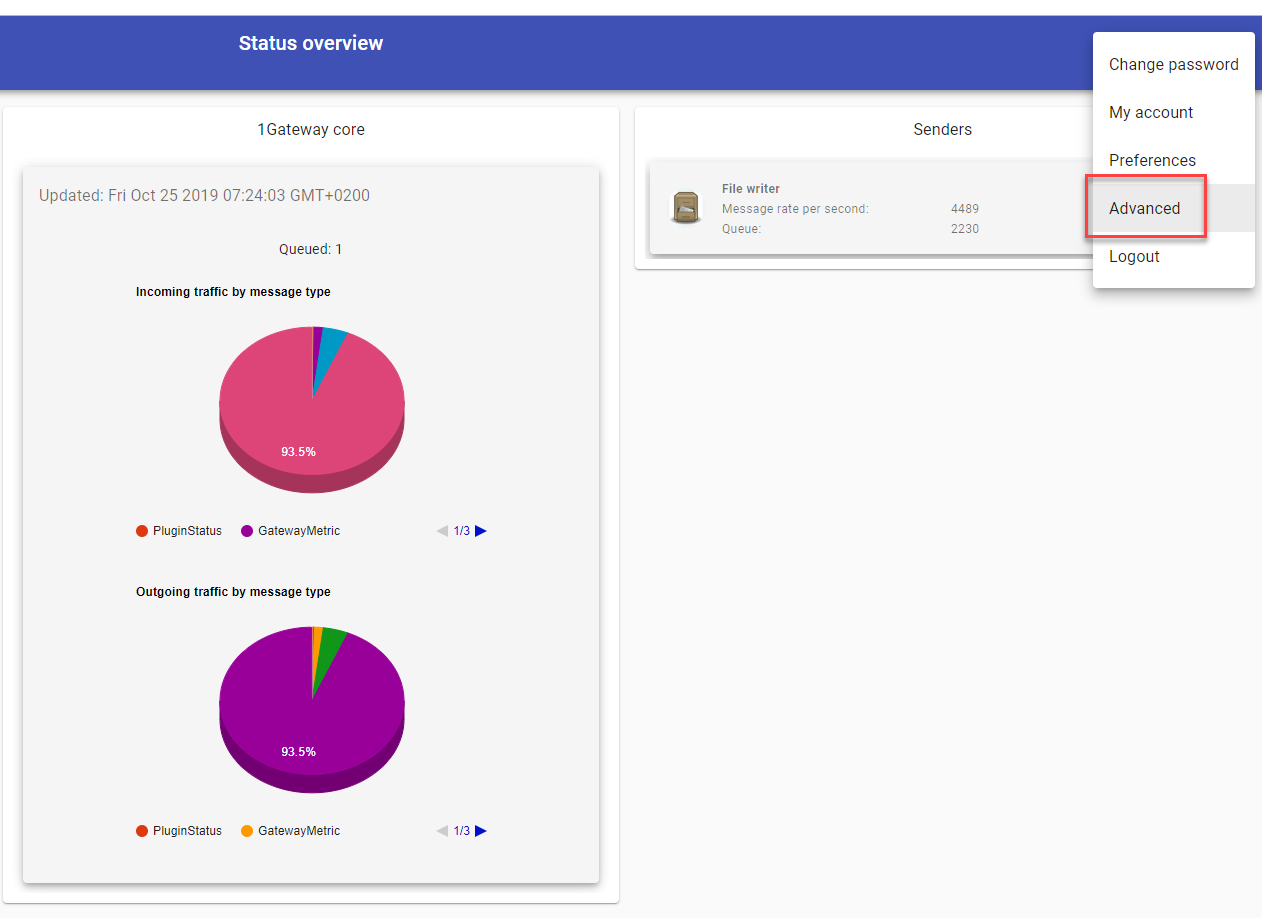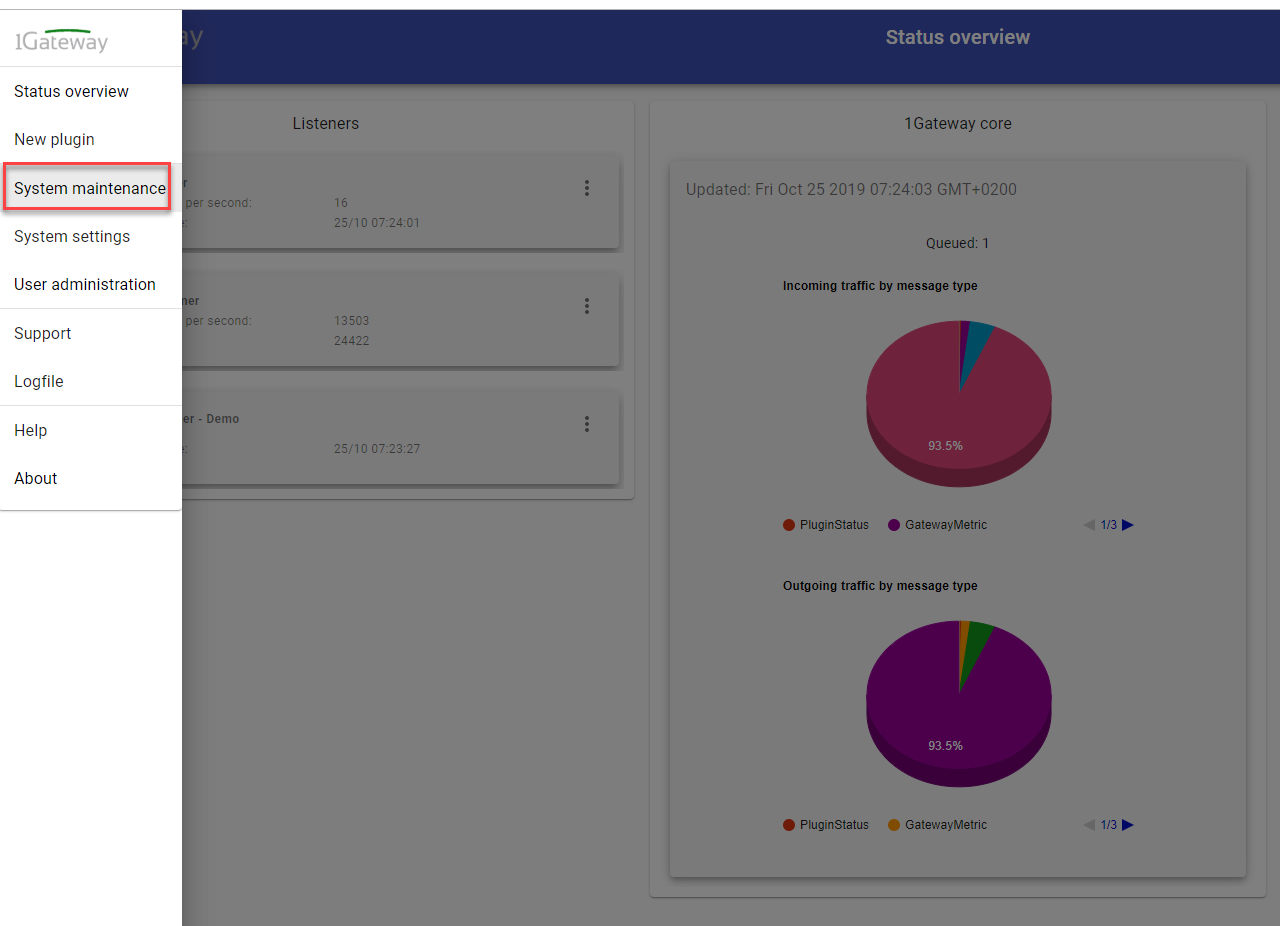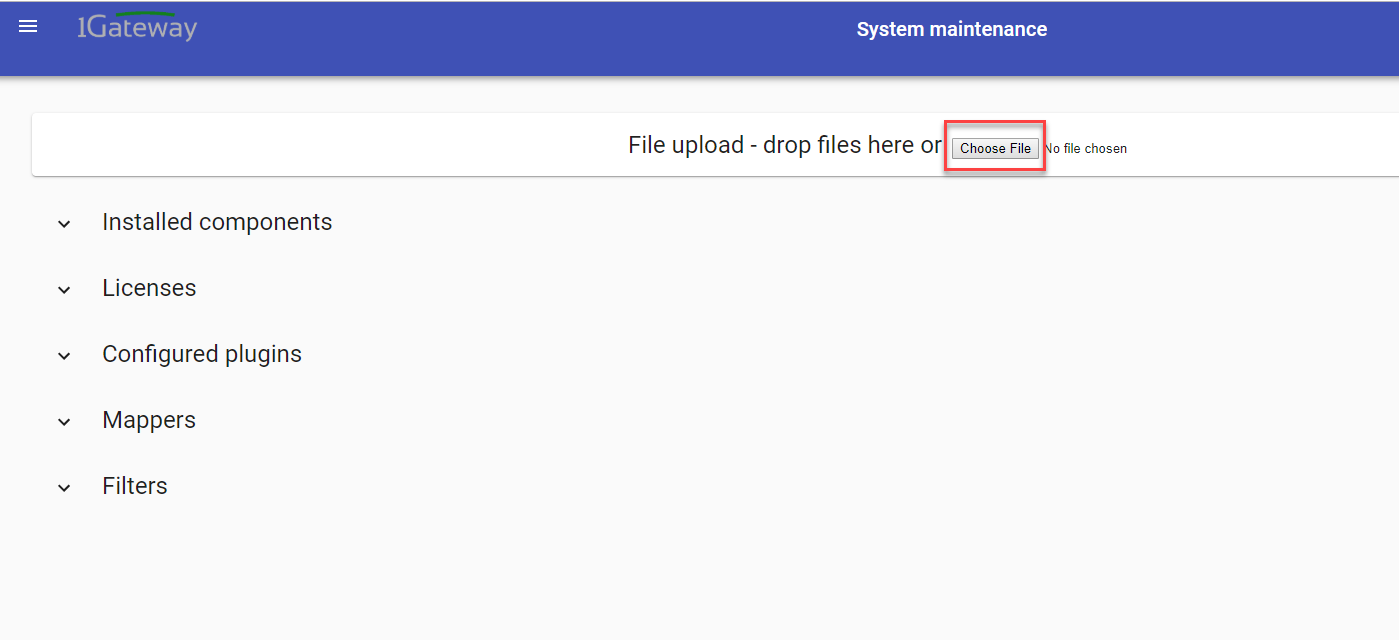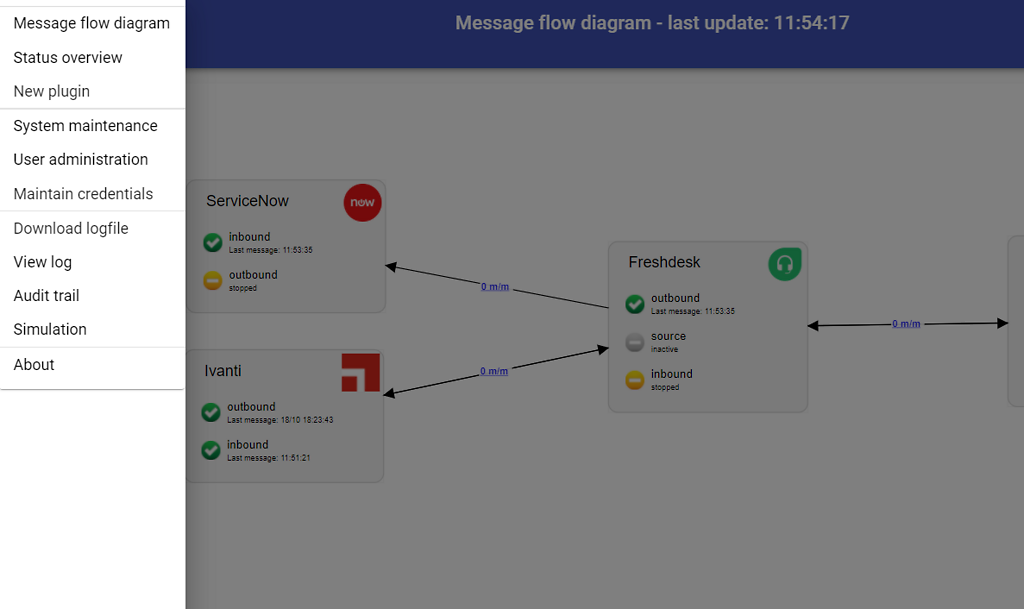Database Listener
Description
The SQL Database listener runs SQL queries periodically and sends the output to 1Gateway as messages.
Prerequisites
The JDBC driver for the database has to be installed in the 1Gateway data/lib directory (File Upload into System Maintenance - 1Gateway restart is required).
Database | JDBC Driver Provider | JAR file name | Download |
MySQL | Oracle Corporation | mysql-connector-java-VERSION.jar | |
SQL Server | Microsoft Corporation | mssql-jdbc-8.2.2.jre8.jar | |
Oracle | Oracle Corporation | ojdbc6.jar, ojdbc7.jar, ojdbc8.jar | |
The PostgreSQL Global Development Group | postgresql-VERSION.jar | ||
SQLite | sqlite-jdbc-VERSION.jar |
Installation
Make sure you have the 1gateway zip file that includes the plugin files and valid licences information ready. This file has been provided to you with the installation files.
1 - Login

Login to 1gateway, and make sure you are in "Advanced mode". If this is the first time you log in, the default user and password are both 'admin' (without the quotes).
2 - System Maintenance

Click on the menu icon and choose the option "System maintenance"
3 - Upload file

In the System maintenance view you can either drag and drop the downloaded zip file or select it by clicking the "choose file" button.
4 - Restart

After the upload installation will be confirmed. Restart 1Gateway to ensure any locked files are updated.
Configuration

Open the main menu and click on "New plugin"

Select the plugin you want to configure. Use the Filter field if needed.

There are two different profiles to configure:
- Connection profile: includes database connection configuration
- Query profile: configuration of the queries to run
Connection configuration

If a connectionString is defined, the rest of the parameters don't have to be set, and will be ignored. If no Connection String is set, the rest of the parameters have to be defined.
Field name | Supported values | Description | Example |
|---|---|---|---|
Database host | Any string | Host where the database is | localhost |
Database port | Any string | Port number | 1433 |
Databse type | Any string | Database type | sqlserver, sqlite |
Database user | Any string | Database user | sa |
Database password | Any string | Database user's password | abc123 |
Database name | Any string | Database name | TestDB |
Connection string | Valid connection string | Connection string to the database | jdbc:sqlite:C:\\Temp\metric.db jdbc:sqlserver://localhost:1433;user=sa;password=abc123;databaseName=TestDB; jdbc:oracle:thin:[<user>/<password>]@//HOSTNAME:PORT/SERVICENAME |
Query configuration

The SQL query output must contain a Type column that specifies the message type. This message type is then used for the mapping (see Mappers). In this example, SCOMAlert was defined.
Field name | Supported values | Description | Example |
|---|---|---|---|
SQL query | Valid SQL query | Query to be executed | select 'SCOMAlert' as type, * FROM Alertview WITH (NOLOCK) WHERE TimeRaised is not NULL AND LastModified > ? ORDER BY LastModified |
Field parameter | Any string | Parameter in the query to run as the where field | LastModified |
Field default value | Any string | Starting parameter value (needs to be valid) | 2019-01-01 00:00:00.000 |
Database connection | Any string | Name of the connection to use | SCOMDB |
Polling interval | Any integer | Polling interval in seconds (default is 300) | 60 |
The field parameter is defined in the query as '?'. It is recommended to define at least one parameter with its default value.
See also